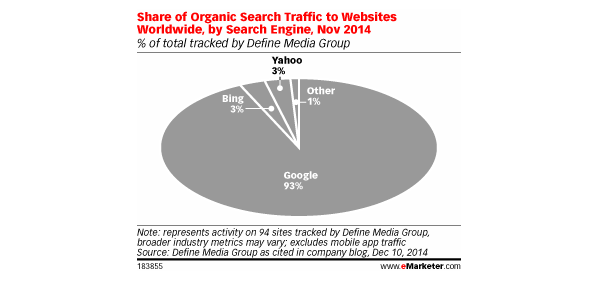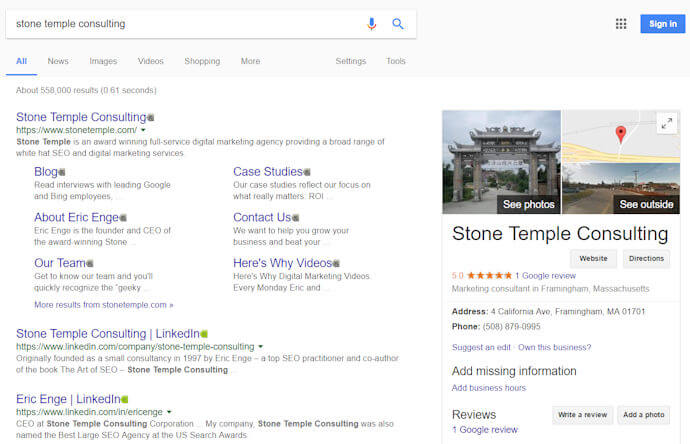In order to be a successful business in today’s saturated marketplace in the digital sphere, it’s important to have a website that translates beautifully onto mobile devices. It is estimated that by 2017, the United States will have approximately 222.9 million smartphone users.
After India and China, the U.S. has the largest number of mobile phone users, which means, having a great content strategy for mobile websites & mobile app is no longer a choice but a necessity.
So, how do you create a successful mobile-optimized content strategy? Below are 6 ways to do just that!
1. Create Longer Content
Today, it is not enough to quickly write-up a 500-word article and hope to attract traffic to your website. Since longer content has greater potential to discuss any given subject matter in greater depth, it is likely to be read more and possibly shared more across social networking sites as well.
In recent years, Google has updated its search algorithm to include ‘content quality’ as a metric to rank websites. The more relevant and well-written the article, the more likely it is to be read by the audience. Ultimately, the likelihood that someone will read your 1000-word article depends on various factors such as the subject matter, the market and its relevance to the user’s query.
Although longer content will allow better use of SEO, you still need more compact articles with plenty of useful information packed into a small space. Regardless of how long the article is, the first two paragraphs — the part of the content known as lede in journalism — is the hook which brings the reader in. This portion of your content is especially important in a mobile environment where attention spans tend to be a lot shorter and readers click away if not interested.
2. Think ahead
According to Google, in 2015 there were more online searches taking place through a mobile device than ever before. The company said that more Google searches took place on mobile devices than on computers in 10 countries which included the United States and Japan.
When designing the look of your website, it is imperative to think of how it will look on a phone, not just on a laptop or desktop. A mobile site cannot have a ton of adverts as compared to its desktop version which could contain two sidebars on either side of the page with advertising space.
3. Know your reader
With zero understanding of your audience, you are setting yourself up for failure. To create a truly successful mobile content strategy, it’s important to know your audience. For example, a few points to note regarding audience behavior include:
- Where does your audience spend the most time when they are online? Which social media platforms are most popular among your target audience?
- Do they access the internet using smartphones or tablets?
- What percentage of total audience access to your website comes through mobile devices?
- How popular is visual content?
- Which type of content is the most shared and which type gets the most audience engagement?
These are just a few questions to ask when trying to decipher your audience in order to create a great mobile content strategy. Understanding what your audience prefers doing online will allow you to tailor content to their interests.
An important point to note is that when you are creating content meant to increase audience engagement, don’t tailor content to fit your marketing objectives. Instead, create great content first and then think of creative ways in which to tailor the content to fit your marketing objectives.
4. Better Metrics & Better Formatting
To figure out which content is doing well with your audience, you need to look at a number of factors. Instead of focusing solely on the number of likes and shares your published content generates, try to focus on more substantial goals such as:
Higher conversion rates from visitors on landing pages
Lower bounce rate: The lower the bounce rate, the longer your visitors are staying on your site and not instantly clicking away. A high bounce rate means that your page is not user-friendly and it also means that visitors to your site aren’t clicking on calls-to-action or converting into valuable contacts.
A high bounce rate also means that the visitor wasn’t able to find what he or she was looking for, which indicates a need for improving your content quality. A few ways to improve bounce rate are:
- Choose the right keywords in accordance with your content
- Write useful meta-descriptions for users being directed by search engines
- For a more attractive page use a larger font, ensure white spaces on your page, use large headlines and make use of bulleted lists. All this helps to make your text more readable
- Ensure you are using responsive web page design which translates seamlessly across various devices.
- Don’t ramble and get to the point, fast.
- Utilize images and videos, to add an extra layer to your content.
5. Pick the right type of content
Knowing your audience’s habits online is not enough when it comes to creating great content. You also need to know that different type of content works with different businesses. Although E-commerce sites have a greater chance of success with quizzes and contests, white papers and case studies are better suited to B2B marketers.
Being able to efficiently re-purpose content across various marketing channels is a skill you need to have an excellent content strategy. Switching content between newsletters, social media, e-books or a blog post will make sure you get the most exposure for any piece of content.
Using video content is another option if you want to convey your message quickly and succinctly on a mobile app, allowing your readers to make more efficient use of their time. Other similar visual content options include infographics and images to convey your message.
6. Smart content
Along with following the age of copywriting rule of ‘writing how you speak’ to achieve maximum clarity, it’s important to know what to say and what to skip. This means that when you are making a point and some of what you say feel superfluous, instead of including everything in the same article, use a hyperlink to send readers away to read that point in depth on a separate page. This allows your reader to focus solely on what you are saying with minimal distractions.
When your reader’s attention span is getting shorter, focus on making their experience on your mobile site as streamlined as possible.
Conclusion
By carefully crafting your mobile content strategy, you are more likely to see results and surpass your marketing goals. Knowing your audience is only one part of the puzzle. You need to know how to optimize content across different platforms including smartphones, tablets, laptops and desktops.
Finding the right mix of SEO, quality, quantity and usefulness will help you craft the perfect mobile content strategy.
Source: SEMrush blog


















